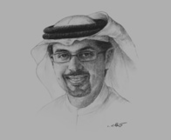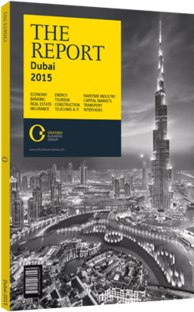Hamad Buamim, President and CEO, Dubai Chamber: Interview

Interview: Hamad Buamim
Given continued soft growth projections for Europe, the US and China, in what regions is the UAE seeking stronger two-way trade and investment ties?
HAMAD BUAMIM: We have been strengthening ties between the UAE and emerging markets, particularly India, Africa and the Commonwealth of Independent States. India was Dubai’s main trade partner with total non-oil trade worth Dh137bn ($37.3bn) in 2013 – a 10% share of total non-oil trade. The diverse destination portfolio also includes China, with total non-oil trade valued at Dh135bn ($36.7bn), and the US at Dh86bn ($23.4bn).
We can also see the close links with India. Some 30,000 Indian firms have opened branches in the country, while links with Africa, mainly bilateral trade and cooperation, have also been strengthening over the years. Our country is becoming one of Africa’s top-20 trading partners for exports and imports and, on top of this, we are Africa’s main GCC trading partner, with approximately 80% of the imports from Africa being primary products, such as food and beverages. The future of economic cooperation between the UAE and Africa is expected to consolidate further in the coming few years. Dubai’s total non-oil trade with Africa had a value of Dh60bn ($16.3bn), and as of September 2014, Dubai’s main carriers, Emirates and flydubai, increased cargo and passenger routes to 38 African countries.
What is the most significant change in Dubai’s economic focus in recent years? How do you see the balance of sectors in the economy changing?
BUAMIM: Dubai’s economic focus continues to be one of diversification and it has started shifting towards becoming a knowledge-based economy. It has maintained growth and added new industries to its economy, while focusing on high value-added sectors, such as trade, tourism, logistics and financial services. These pillars are supported by others including retail, construction and real estate. With regards to high-value sectors, in 2013 Dubai’s non-oil trade grew by about 8% to exceed Dh1.32trn ($359bn), an increase of Dh94bn ($25.5bn) on the previous year. The hospitality sector saw a 10% increase in the number of tourists to 11m, with the number of passengers travelling through Dubai International Airport rising by 15.2%, to 66.4m. Dubai’s Tourism Vision 2020 strategy is a bold plan to double the emirate’s tourism revenue in seven years. Aviation continued to be the strongest driver in the logistics sector, especially with the opening of the Al Maktoum International Airport in October 2013.
For 2015, Dubai’s budget will continue to support economic development across key sectors. Standing at Dh41bn ($11.16bn), the budget is the largest since the global financial crisis and has an operating surplus of Dh3.6bn ($979.92m), which points to effective leadership and substantiates Dubai’s strong economic performance. In the run up to World Expo 2020 we will see increased construction, due to site and infrastructure development. We also expect an increase in advanced industries’ contribution to Dubai’s GDP over the medium term, until it reaches an equal footing with real estate, in line with diversification goals. We expect growth in advanced industries to stem from sectors such as semiconductor technology and nuclear energy.
Which high-value sectors are showing the most encouraging growth forecasts and investment opportunities for 2014-15?
BUAMIM: High-value sectors that are expected to witness robust growth and provide lucrative investment opportunities include social sectors, like education and health, and services sectors, such as personal, professional and business services. This is in addition to IT, technology and other knowledge-intensive sectors. The trade sector also continues to be buoyant, driving growth in Dubai’s economy. Our Traders Outlook Survey indicated that 60% of traders expect market demand to be at very good or good. Economic growth over the next six years will be led by Expo 2020, which is expected to contribute approximately $23bn over the 2015-21 period, the bulk of which will materialise in 2020.
You have reached the limit of premium articles you can view for free.
Choose from the options below to purchase print or digital editions of our Reports. You can also purchase a website subscription giving you unlimited access to all of our Reports online for 12 months.
If you have already purchased this Report or have a website subscription, please login to continue.

